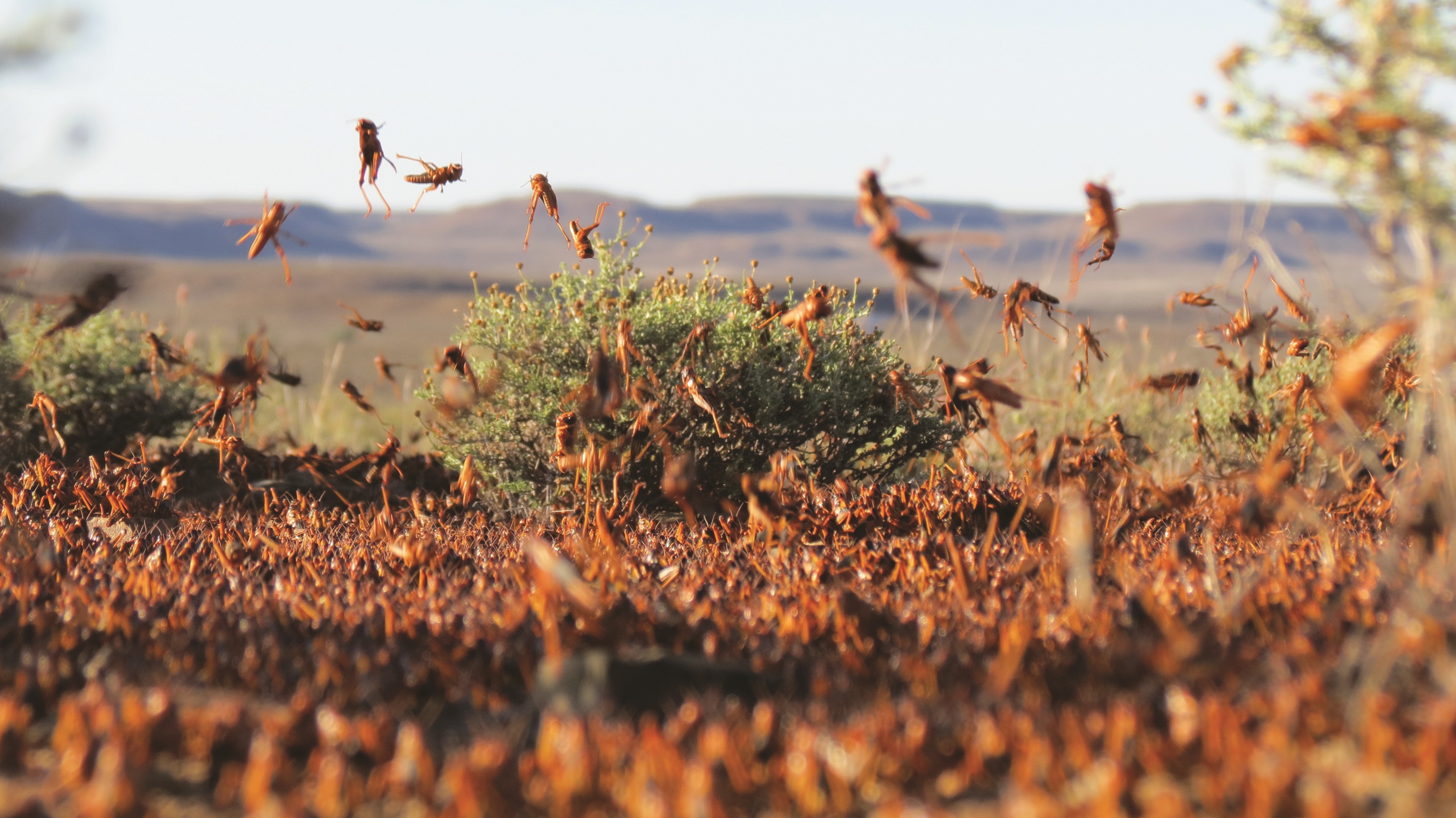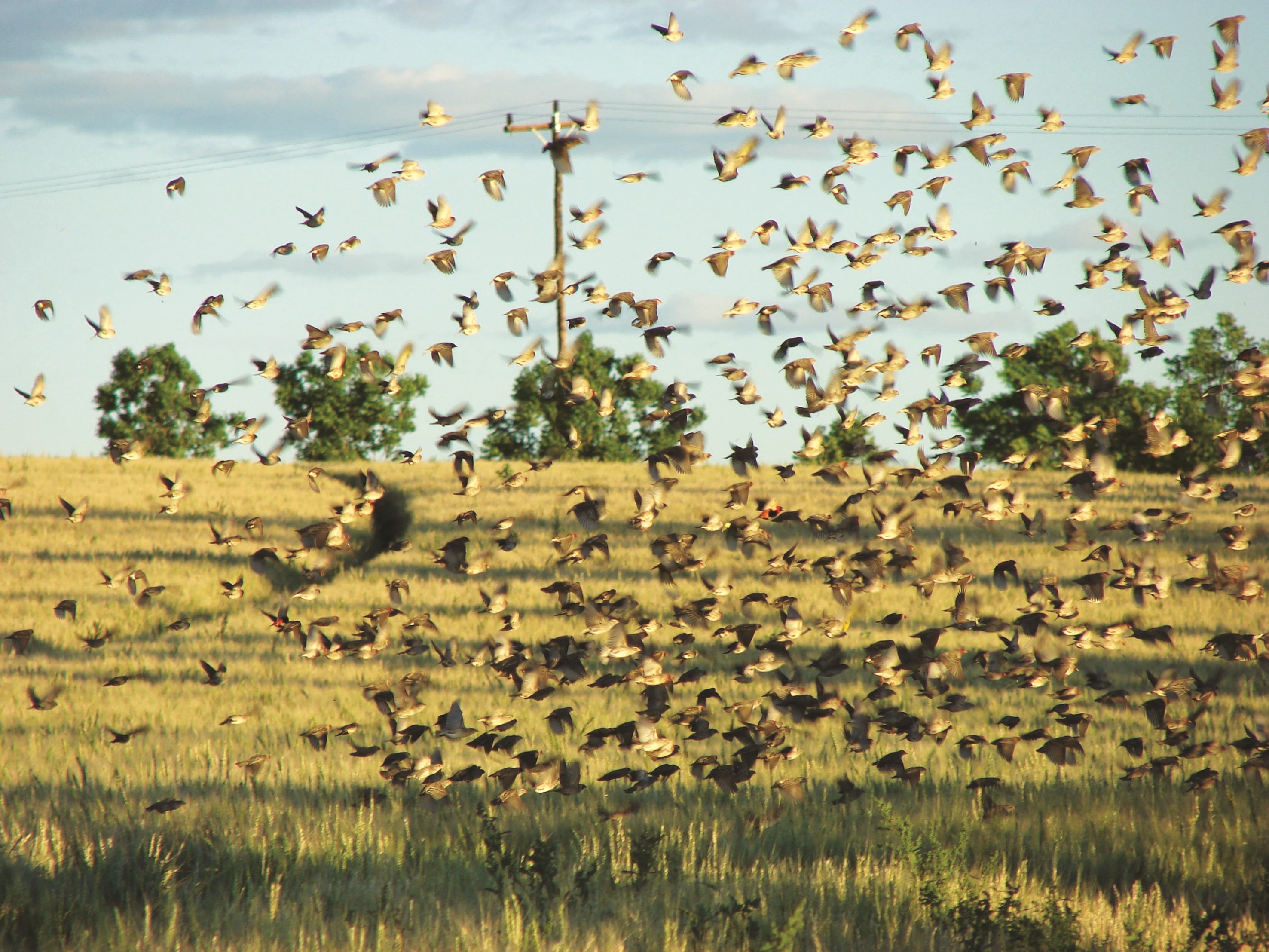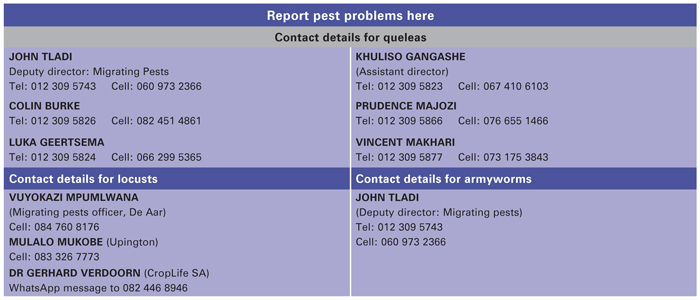November 2022
| LOUISE KUNZ, ASSISTANT EDITOR |
 |
It is vital that farmers can identify pests to ensure early management, using the right set of tools. Queleas and locusts are major agricultural pests, and are declared pests according to the Agricultural Pests Act (Act No. 36 of 1983). These pests can cause substantial damage to pastures and crops.
AGRICULTURAL PESTS
The Department of Agriculture, Land Reform and Rural Development (DALRRD) is responsible for the control of these pests.
Queleas
Before an official of the department can do a physical inspection when queleas have been reported, the following procedures/steps must be followed by the complainant:
The complainant may then contact one of the resource conservation inspectors (see contact list) with the information and report the queleas. An appointment will be made to inspect the sleeping or breeding area in the company of the complainant.
Locusts
The United Nations office in Geneva, Switzerland, calculated that even a tiny swarm of locusts can eat as much food as can feed 35 000 people in a single day. This is why it is so important to control locusts.
According to Dr Gerhard Verdoorn from CropLife SA, who has 40 years’ experience in dealing with locust outbreaks, grasshoppers can be controlled without commercial pesticides. He believes locusts should be controlled in the pedestrian phase of their development – the period in which they ‘walk’ for seven to ten days before they begin to fly.
Once the locusts start flying, it is more difficult to control them. Swarms are usually sprayed early in the morning, before they start flying, or at night, when they rest. Spraying them while they are in the air not only wastes pesticide, but also poisons the environment. Therefore, Dr Verdoorn suggests that a herd of animals is chased over the pedestrians, or that branches are tied to a vehicle and dragged over them. This injures the pedestrians to such an extent that they do not begin to fly.

It is very important to control locusts before they start flying.
Grain SA photo competition – Luca Geertsema, December 2016
Fall armyworm
Fall armyworm (Spodoptera frugiperda) are active during dusk and dawn, and mostly hide in plant whorls or between leaf sheets during the day. Although the initial infestation often goes unnoticed, as small larvae cause little plant damage, large larvae consume 80% of their total food intake in the last few days of development. When they move into the cob, poor gemination follows and severe damage up to hard-seed stage can occur.
According to CropLife SA, the best control for armyworms is early treatment. Scouting for moths and monitoring with pheromone traps can determine early moth flights, indicating infestations and the size thereof. Field inspections every three to four days are crucial to identify egg parcels, small larvae or ‘window’ damage. When these are identified, a producer should act fast because mature larvae are more difficult to control, especially once they have moved into the cob.
INTEGRATED PEST MANAGEMENT
Integrated pest management (IPM) is an effective and environmentally sensitive approach to pest management. This method emphasises the growth of a healthy crop with the least possible disruption to agro-ecosystems. It encourages natural pest control mechanisms and uses all suitable techniques or strategies to keep pests below levels that cause unacceptable crop losses. The first requirement of IPM is to grow a healthy crop, which is more able to withstand the effects of pests than a weak crop or one under stress.
Pest management protects the crop against yield losses – it does not increase the potential of a crop to produce a high yield. It is also a combination of all appropriate practices into a single plan for crop and pest management that optimises the use of inputs to reduce pests and crop damage to an acceptable level and to maximise crop yields.

Because of the damage it can cause to crops, the quelea is described as Africa’s most hated bird or the dreaded 'feathered locust’.
Advantages
With IPM, the use of inputs is optimised:
Remember that IPM is only one aspect of overall crop production that needs to be considered by a grower. Overall management of the crop by the grower affects pest management, and vice versa.
Sources
KLK Gesprek, June 2022
Pula Imvula, July 2022
https://www.epa.gov/safepestcontrol/integrated-pest-management-ipm-principles
https://sagrainmag.co.za/wp-content/uploads/2020/12/Grain-Guide-2021-ENG-web.pdf

Publication: November 2022
Section: Pula/Imvula